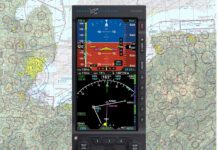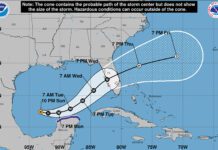Like the audiences they serve, magazines are entities that are-or should be-in constant motion. How and what subscribers think about the articles theyre interested in reading in a monthly magazine arent fixed objects anchored on a distant horizon. Opinions change, viewpoints shift, tastes and inclinations evolve but throughout, theres one constant: For the readers of this magazine, the need for practical, timely information about flying airplanes safely never changes.
And that, in a nutshell, is and always has been the mission of Aviation Safety. It will now continue under the able guidance of a new editor, Joseph E. (Jeb) Burnside, a name many avid readers of aviation publications will recognize. Jeb was fundamental in the early success of our online sister publication, www.avweb.com, and he has been involved in aviation communication, marketing and government affairs for the past two decades.
Prior to taking over Aviation Safety, Jeb was at the National Air Transportation Association and before before that, he did a stint as news editor of Professional Pilot magazine. Hes active in GA, having owned a C33A Debonair for five years, whose interior he recently refurbished himself.
Jeb brings to Aviation Safety a rare combination of extensive GA experience, a refined eye for what makes a compelling story and an extraordinary flair for the written word. Were looking forward to Aviation Safetys new direction under Jebs stewardship.
And what will that be, exactly? I can best answer that by relating an e-mail exchange I had with a would-be subscriber some months ago. My correspondent had seen a recent marketing effort for Aviation Safety and wondered why we thought a magazine about flying safety was a good idea. Wasnt it just a matter of being careful and not taking any risks? How much could be written about that?
If that were Aviation Safetys sole mission, the answer would be: not much. But Aviation Safety is not just about safety, its a high-level flying technique magazine whose underlying theme happens to be safety. And anyone who has flown much knows that safety is not about avoiding risk, its about identifying and managing flight risk.
At Aviation Safety our view has always been that safe pilots are proficient pilots and proficient pilots fly as much as they can rather than locking the hangar door when the wind kicks up or a low ceiling rolls in. Our mission is to help you expand your limits to learn what works for you, not to preach about what works for us or some multi-thousand-hour skygod who has long since forgotten what its like to have sweaty palms in a stiff crosswind or second thoughts about crossing a lumpy springtime cold front.
In the coming months, look for Aviation Safetys continuing coverage of the fundamentals-compelling articles on stick-and-rudder technique, IFR procedures, weather judgments and reports on emerging technology, such as primary flight displays. Beginning with this issue, well be placing a new emphasis on practical training tips that you can take directly to the cockpit.
None of this happens in a vacuum. A magazine is the product of what readers wish it to be. So let us hear from you. Tell us what kinds of topics youd like to see in these pages, using any of the new contact addresses given here. And if youre a potential contributor to Aviation Safety, let us know that, too. Wed be delighted to hear your ideas.
-Paul Bertorelli
Editorial Director



